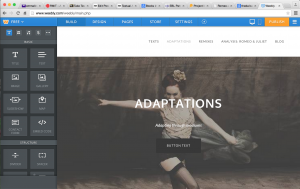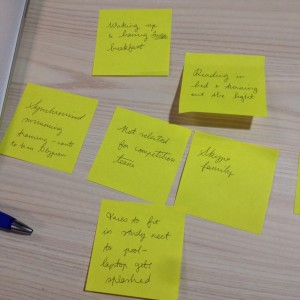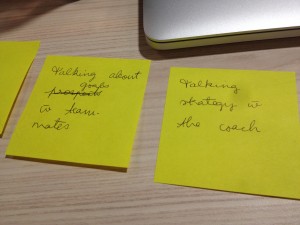We grow up believing that narrative is an imperative element of media; mainstream movies, television shows and songs support this idea.
In its most basic sense, narrative is the telling of stories. It is the (commonly linear) structuring of existence into a form which we can “comment on and amplify”.
From infancy, we are told stories, both true and fictional. Our parents reading stories to us is how we learn to speak and to read, and in turn this shapes everything we do. Telling stories is what separates us from every other species.
The basics of narrative include:
- Causality: the logical progression of events, e.g. flying Melbourne to Sydney cannot happen unless you are somehow in Melbourne first
- The 3-part model of storytelling:
- Character development – learning about characters, how they’ll react in different situations and how they change over time; becomes more complex as we learn more about the character
- Plot – chronological sequence of events, usually based around action (what happens, who carries out the action, who it happens to)
- Resolution – the ending is the natural result of the plot
…and the 7 types of stories are:
- Overcoming the monster
- Rags to riches
- The quest
- Voyage and return
- Rebirth
- Comedy
- Tragedy
These types of stories are seen again and again in different contexts with different characters, but ultimately the same plot thematically.
In class, we mapped out both the emotional intensity:

and character prominence:

in well-known films. My partner, Maggie, and I chose Cinderella. When other groups drew their graphs on the whiteboard, we discovered there was a prominent trend in emotional shifts at different points in the plot line.
On a closer level, patterns of representation often enable viewers to guess what will happen before the action actually happens in a scene, e.g. closing bathroom cabinet mirror to find someone standing behind you with a knife. This expectation can be subverted to create an interesting plot twist and keep viewers interested.
I personally believe that creating meaning from everything we see is an innate part of being human. Even if there are no clear plot points, as in the film we watched in the lectorial, there are loose connections between elements that we (the viewers) may interpret in our own ways.
As we saw in class, even experimental films that do not follow the conventional plot progression of mass media, tell stories in some way or another. In the film, titled “We have decided not to die”, there were three distinct and separate sequences, each of a different person.
We Have Decided Not to Die
Non-narrative?
- There is no context for why people are where they are, doing what they are doing
- Characters are props in the film
- Blunt transitions from one person to another
- Focus on visual elements and mood rather than story
- No beginning or end apart from a cut and music starting (no reason/causality)
- Nothing explicitly stated, no explanation – have to guess meaning for everything
- No emotional levels – constant chaos
or Narrative?
- Title: We have decided not to die – gives meaning to scenes and aims to characters
- Climax during each scene (action)
- 3-parts: birth, in between, death (headings are sequential)
- Similarities between characters formed their collective character development
- Thematically characters were connected – patterns of representation (breaking out, jumping)
- Snapping from one place to another gives the sense of a journey taking place
This was yet another intriguing class that took common, everyday material, and asked me to think about it in a new way. Every day I see and hear stories unfolding at different speeds, in numerous forms and in a plethora of contexts but I hadn’t really considered these stories beyond their content and my surface level reaction. After this course, I don’t know if I’ll ever be able to watch a movie or even have a conversation without Media 1 concepts springing into my mind.




